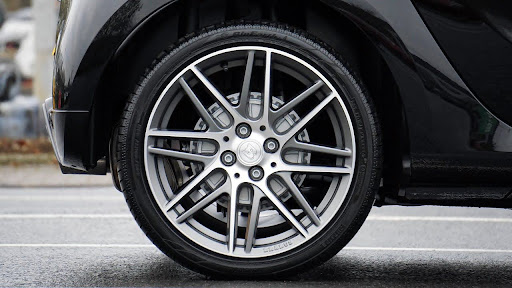
Should electric cars receive subsidies – or “primes” – in order to help countries reduce oil dependence, greenhouse gas emissions and air pollution … and if so, when? This Policy Brief highlights evidence on the costs to consumers and society of purchasing battery electric cars instead of equivalent fossil-fuelled cars and assesses the justification for purchase subsidies. It is based on detailed cost comparison for vehicles currently on sale in the French market and discusses the impact of the €5 000 “prime” for electric cars. Our analysis finds that:
â–º Electric passenger cars currently cost €4k to €5k more to their owners than an equivalent fossil fuel car over the vehicle’s lifetime…
â–º … but because of greater travel distances, an electric delivery van costs €4k less to owners over its lifetime than a similar fossil-fuel van.
â–º Societal costs for electric cars and vans range from €7k to €12k more than fossil fuelled equivalents.
â–º The costs of reducing CO2 emissions by promoting electric cars, even with low carbon electricity, remain high.
â–º In those cases where electric cars already compare favourably to fossil-fuelled vehicles, subsidies may be superfluous.
Electric vehicles have gathered renewed interest in recent years as concerns about energy security, climate change and air pollution have motivated governments and manufacturers to consider alternative transport energy pathways. Recent estimates put the global electric vehicle fleet at over 120 million units (essentially electric bicycles and scooters in China) with the most popular electric car models achieving global sales of approximately 44 000 units in 2011. These numbers are likely to pick up as more electric cars become commercially available but real questions remain regarding consumers’ ultimate uptake of battery electric cars.
The current generation of electric cars represents a significant improvement over previous ones. Nonetheless, electric vehicles remain more expensive than their fossil-fuelled equivalents and may need government assistance to trigger wide-spread uptake. In line with strategic decarbonisation goals, governments have provided research and development funding and, in many cases, direct and sometimes substantial purchase subsidies. One reason is the belief that the shift to a low-carbon transport is inevitable but that an early (and assisted) shift to electro-mobility will reduce the overall burden on society.
The “early-shift” rationale stresses that not only is government intervention in electric car markets necessary (on a sometimes large scale) but that society ultimately benefits due to a reduction of the oil import bill (with knock-on productivity impacts throughout the economy). An alternate storyline might highlight the elevated upfront opportunity costs of reducing energy dependency and greenhouse gas emissions via electric cars as opposed to advanced internal combustion engine vehicles and hybrids.
Comparison of fossil-fuelled vehicles and electric cars is not always easy as conventional cars rarely have equivalent electric counterparts. Several models marketed in France do, however, exist in both fossil-fuel and electric versions, built on essentially the same body and offering similar comfort levels. Because of the small set of vehicle pairs studied, our findings can only be taken as an indicative snapshot of the relative costs of electric cars though many of the lessons derived from the analysis should be applicable elsewhere.
How much more (or less) does an electric car cost to own and operate than an equivalent fossil-fuel car? The answer is “it depends”. It depends on the user and on the viewpoint taken – a typical consumer counting out of pocket expenses or society at large looking at costs of electric over fossil-fuelled mobility. It also depends crucially on how far the car is driven and how much the battery costs to produce.
Owners of the electric cars studied can expect to pay €4 000 to €5 000 more than a fossil-fuelled passenger car over the vehicle’s lifetime under typical use scenarios (30-35 km/day, 365 days/yr). However, a higher use scenario – say that of a delivery van travelling 90 kms a day during weekdays—would, on the contrary, save its owner about €4 000 over the vehicle’s lifetime. Under high travel scenarios (fleet use, deliveries, taxis), one might expect that a market already exists for electric cars if potential buyers have confidence in the advertised driving ranges and dealer support for these vehicles. Even without the €5 000 purchase subsidy, people travelling longer daily distances would likely already benefit from an electric car.
The sensitivity of costs to daily travel distance underscores a clear tension in electric car markets. The greater an electric car travels every day, the more attractively it compares to a similar fossil-fuelled model. Yet most electric cars are currently constrained by their travel range – sometimes significantly so in adverse climatic and traffic conditions. Increasing range requires increasing battery capacity (or swapping the battery) which increases costs and thus erodes the attractiveness of electric cars over their fossil-fuelled counterparts.
Each electric car costs society €7 000 to €12 000 more than its fossil-fuelled equivalent over its lifetime. This calculation ignores taxes on fuel (as from society’s point of view these are a transfer rather than a net cost), includes subsidies and accounts for air pollution impacts. Our analysis excludes possible energy security benefits. This additional cost represents what society is willing to pay in order to promote electromobility – putatively to reduce the carbon intensity of transport. So what are the CO2 reduction benefits of purchasing and operating an electric car instead of a conventional car? In our analysis, electric passenger cars under typical use scenarios emit about 20 tonnes less CO2 than their closest fossil fuelled equivalents which translates into a societal cost of around €500 to €700 per tonne of CO2 avoided. This is somewhat higher than many other measures to reduce CO2 emissions, even within the transport sector.
Several other key messages emerge: First, the uptake of electric vehicles is intractably linked to fuel efficiency improvements in petrol and diesel cars – at least over the medium term to c. 2020. Gains in fuel efficiency will have a greater impact on widening the cost of ownership gap in favour of fuel cars than gains in electric efficiency (both of production and propulsion) in reducing this gap.
Electric cars are “displaced emission” rather than zero emission vehicles since electricity production may generate emissions. However, except in some cases where electricity production is highly carbon intensive, efficient electric cars will generate fewer lifecycle CO2 emissions than comparable fossil-fuelled counterparts. Exactly how much less depends on the carbon intensity of marginal electricity production used to charge electric vehicles, the full lifecycle emissions (including production) of comparable electric and fossil-fuel powered vehicles (and their fuels) and the relative energy efficiencies of those vehicles.
Electric vehicles already promise financial savings for certain operators without subsidies. These include fleet vehicles that have predictable daily travel patterns and can be charged on-site at night, shared car systems where daily travel distances and recharging frequencies are elevated, urban delivery vehicles and taxis (if range allows).
In France, the government purchasing authority has coordinated the largest single commercial order of electric vehicles (18 700 units) for several State affiliated and commercial vehicle fleets (e.g. post office, national rail operator, general government services and several large private companies including Electricité de France and various telecom operators). The rationale for subsidising these purchases is not entirely clear since these vehicles will likely be operated in conditions already favorable to the use of electric vehicles.
It is also not clear that households will buy electric vehicles as “like-for-like” replacements for fossil-fuelled cars. For many urban households, the electric vehicle bought instead of a fossil-fuelled car may be a two-wheeler or other small, purpose-built, low range, agile, easy-to-park and congestion-beating urban electric vehicle. This is already the case for electric bicycles in China.
If there is one word that characterises current electric car markets, it is “uncertainty”. Overcoming this uncertainty is the rationale for government intervention. Some commentators argue that the costs of intervention will be more than compensated by future savings (on reduced oil imports and avoided environmental costs). Others suggest that high levels of government support for electric cars diverts attention from other, possibly more cost-effective investments. Are direct purchase subsidies for electric cars a “good bet” for society? Our analysis does not conclusively answer that question but cautions that in those cases where electric cars already compare favourably to fossil fuelled vehicles, subsidies may be superfluous and that where they do not compare favourably, the onus is on demonstrating that subsidies represent value for money












More Stories
Dürr and GROB concept battery factory uses 50% less production space
DuPont materials science advances next generation of EV batteries at The Battery Show
How Modern Power Management Enhances Connected Fleet Tech